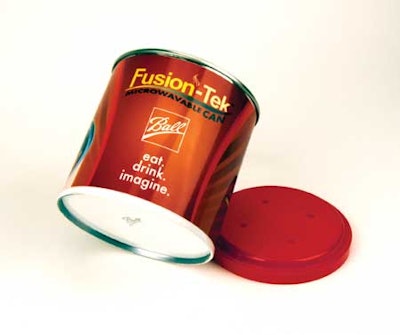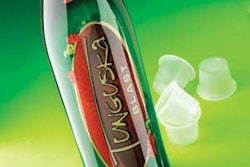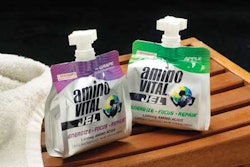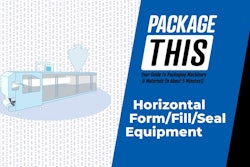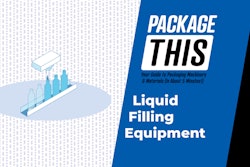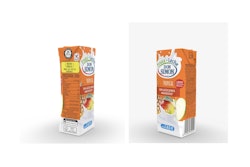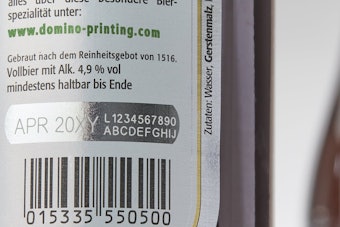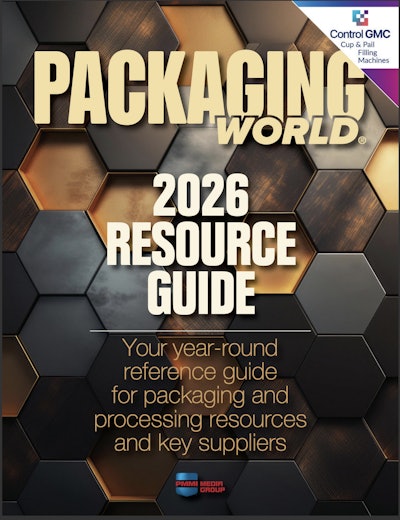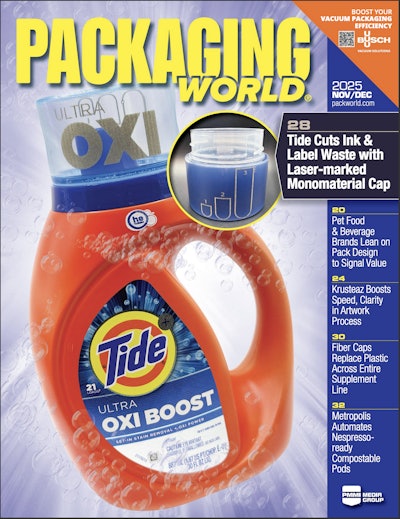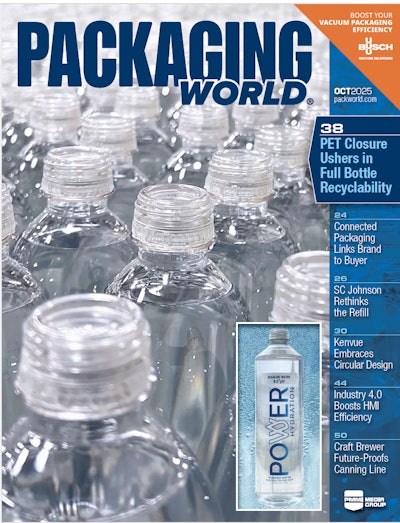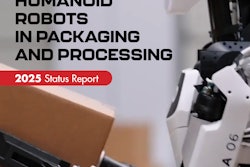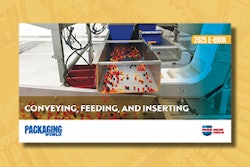Commercial quality production of the package is scheduled to begin in October. Initial interest is primarily for ready-to-eat meals such as soups and stews.
A regular steel food can does not heat in the microwave because microwave energy cannot pass through steel, but Fusion-Tek's plastic end allows microwave energy to pass through the product inside the can, heating it quickly and evenly in 2-3 minutes.
The 307x306 Fusion-Tek can holds approximately 15 oz of product. The package consists of steel can walls, an EZ Open end, plastic end, plastic overcap and insulating foam label.
Shelf stable and tamper- and puncture-resistant, the Fusion-Tek can provides the same shelf life as the traditional steel can because its plastic end has an oxygen barrier that ensures freshness for at least 18 months.
Using Ball's proprietary process, a plastic end is joined directly to the steel can wall. The end is made of multilayer polypropylene/ethylene vinyl alcohol (EVOH) barrier plastic. The end is not injection-molded nor is it seamed on. A proprietary process joins the plastic to the metal.
Engineers from Ball Packaging and subsidiary Ball Aerospace worked together to develop the proprietary technology needed to join the plastic end to the steel can walls. Both groups were looking for a way to get microwave energy into metal: Ball Packaging engineers for food cans and the Aerospace engineers for microwave guidance systems.
The mixed-material package remains viable in the steel recycling stream. According to the Steel Recycling Institute (www.recycle-steel.org), the plastic end simply burns off. The cans will be shipped to packagers with the plastic end on. The packager will fill the cans, seam the EZ Open end on, and apply labels and overcaps.
The cans require overpressure sterilization, but Ball claims the cans can be processed faster than plastic microwavable containers because metal transfers heat into the product faster and also cools faster.
What about costs? Michael Vaughn, Ball's vp, packaging innovation, says “the can is competitive with other microwavable packaging. Fusion-Tek gives our customers the ability to capture a higher retail price for their products and potentially realize some savings over using other microwavable packaging.” Ball would consider other sizes depending on demand.
—Rick Lingle
